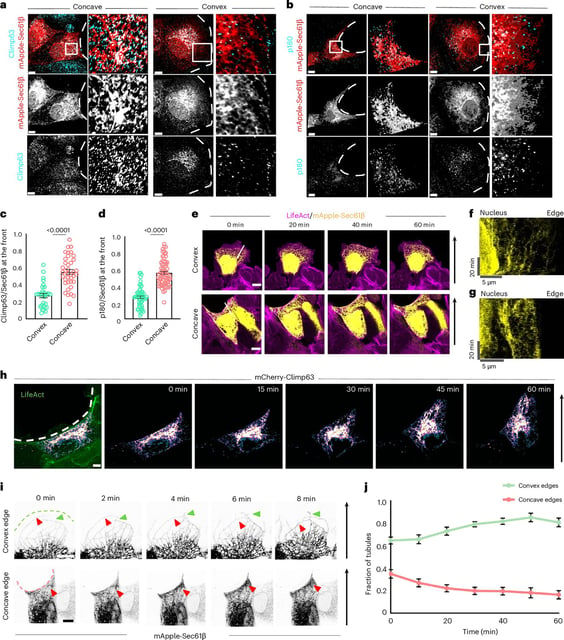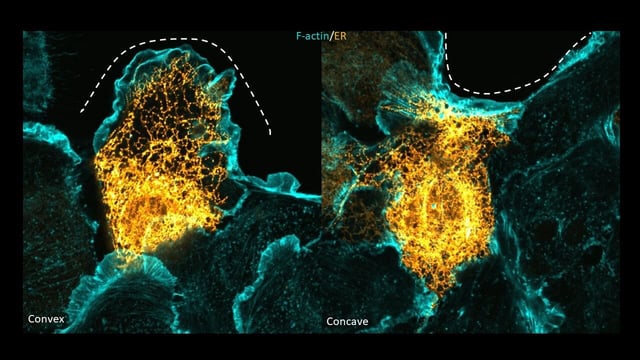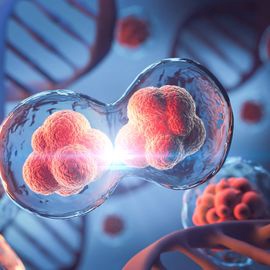Overview
- At outward-curving edges the endoplasmic reticulum becomes tubular and cells advance with broad protrusions, whereas at inward-curving edges it flattens into sheets and the layer closes by a contractile purse-string.
- Forcing the ER into tube-like shapes at concave edges switched cells from contractile closure to crawling, demonstrating a causal role for organelle morphology.
- ER remodeling relied on actin and microtubule dynamics, with microtubules playing a particularly important role at convex boundaries.
- Micropatterned gaps, live-cell imaging and a mathematical model quantified mechanical strain and showed that ER reorganization reduces strain during migration.
- The peer-reviewed study from TIFR Hyderabad and the University of Birmingham was published on August 18 in Nature Cell Biology, with potential applications in wound repair and cancer research identified as future avenues.


